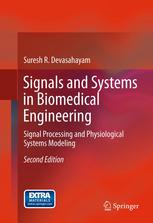

Most ebook files are in PDF format, so you can easily read them using various software such as Foxit Reader or directly on the Google Chrome browser.
Some ebook files are released by publishers in other formats such as .awz, .mobi, .epub, .fb2, etc. You may need to install specific software to read these formats on mobile/PC, such as Calibre.
Please read the tutorial at this link: https://ebookbell.com/faq
We offer FREE conversion to the popular formats you request; however, this may take some time. Therefore, right after payment, please email us, and we will try to provide the service as quickly as possible.
For some exceptional file formats or broken links (if any), please refrain from opening any disputes. Instead, email us first, and we will try to assist within a maximum of 6 hours.
EbookBell Team

4.3
28 reviewsThe use of digital signal processing is ubiquitous in the field of physiology and biomedical engineering. The application of such mathematical and computational tools requires a formal or explicit understanding of physiology. Formal models and analytical techniques are interlinked in physiology as in any other field. This book takes a unitary approach to physiological systems, beginning with signal measurement and acquisition, followed by signal processing, linear systems modelling, and computer simulations. The signal processing techniques range across filtering, spectral analysis and wavelet analysis. Emphasis is placed on fundamental understanding of the concepts as well as solving numerical problems. Graphs and analogies are used extensively to supplement the mathematics. Detailed models of nerve and muscle at the cellular and systemic levels provide examples for the mathematical methods and computer simulations. Several of the models are sufficiently sophisticated to be of value in understanding real world issues like neuromuscular disease. This second edition features expanded problem sets and a link to extra downloadable material.